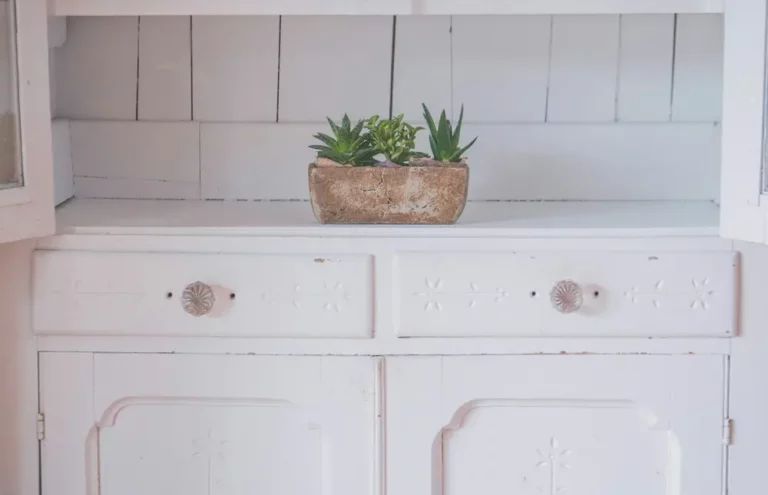Septic Tank Camouflage: How to Conceal Your Tank for a Beautiful Yard
If you’re a homeowner with a septic tank, you know that it’s an essential part of your home’s plumbing system. Septic tanks are underground containers that collect wastewater from your home. They’re designed to break down the solid waste and treat the liquid waste before it’s released into the ground. However, one of the downsides of having a septic tank is that it can be an eyesore in your yard. Fortunately, there are ways to camouflage your septic tank and make it blend in with your landscaping.
One way to hide a septic tank is to use fake rocks. There are many decorative fake rocks available that look like real rocks, but are actually made of lightweight materials. These fake rocks can be placed over the access to your septic tank lid, making it blend in with the surrounding landscape. Another option is to use native plants to cover your septic tank. Native plants are already adapted to your climate and soil, making them a low-maintenance option for landscaping. They can also help to absorb excess water and nutrients from your septic system, improving its overall performance.
When it comes to septic tank camouflage, it’s important to choose a method that not only looks good, but also allows easy access to your septic tank when it needs to be pumped or serviced. Some homeowners make the mistake of burying their septic tank lid or covering it with heavy materials, which can make it difficult or even dangerous for service technicians to access. By choosing a method that is both aesthetically pleasing and functional, you can enjoy a beautiful yard without sacrificing the performance of your septic system.
Understanding Septic Tanks
As a homeowner, it’s important to understand how your septic tank works. A septic tank is an underground system that treats wastewater from your home. It’s designed to separate solids from liquids and to break down organic matter.
Here are some key things to keep in mind when it comes to understanding your septic tank:
- Tank size: The size of your septic tank will depend on the size of your home and the number of people living in it. A smaller tank may need to be emptied more frequently than a larger tank.
- Maintenance: Regular maintenance is essential to keep your septic tank working properly. This includes having it pumped every 3-5 years and avoiding flushing non-degradable items down the toilet.
- Drainfield: The drainfield is the area of soil where wastewater from your septic tank is dispersed. It’s important to keep this area clear of trees, shrubs, and other plants, as their roots can damage the drainfield.
- Signs of trouble: If you notice slow drains, gurgling sounds, or foul odors in your home, it could be a sign of trouble with your septic tank. It’s important to address these issues promptly to avoid more serious problems.
By understanding how your septic tank works and taking proper care of it, you can avoid costly repairs and ensure that your wastewater is being properly treated.
Importance of Camouflaging Septic Tanks
As a homeowner with a septic tank system, you may be wondering why it is important to camouflage your septic tank. Camouflaging your septic tank is not only about making it look better, but it also serves several important purposes.
Firstly, camouflaging your septic tank can help protect it from damage. Septic tanks are typically made of concrete or plastic, which can crack or break if they are hit by heavy objects or vehicles. By camouflaging your septic tank with decorative rocks, plants, or other materials, you can help prevent accidental damage.
Secondly, camouflaging your septic tank can help prevent theft. Septic tanks contain valuable metals such as copper and brass, which can be stolen and sold for scrap. By camouflaging your septic tank, you can make it less visible and less likely to be targeted by thieves.
Thirdly, camouflaging your septic tank can help prevent accidents. Septic tanks are often located in areas where people walk or play, such as backyards or near driveways. By camouflaging your septic tank, you can make it less visible and reduce the risk of someone accidentally falling into it.
In addition to these practical benefits, camouflaging your septic tank can also enhance the aesthetic appeal of your property. By using decorative rocks, plants, or other materials to camouflage your septic tank, you can create a more attractive and cohesive outdoor space.
Overall, camouflaging your septic tank is an important step in maintaining the safety, functionality, and appearance of your septic system.
Different Ways to Camouflage Septic Tanks
As a homeowner with a septic tank system, it’s important to keep it functioning properly and looking good in your yard. Camouflaging the septic tank can help hide it from view, protect it from damage, and blend it into your landscape design. Here are some different ways to camouflage septic tanks:
Using Plants
One of the easiest and most natural ways to camouflage a septic tank is to use plants. You can plant native shrubs or flowers around the tank to create a natural screen that will hide the cover while also providing some much-needed shade in the summer. Some examples of plants that work well for this purpose include:
- Evergreen shrubs
- Small trees
- Grasses
- Wildflowers
When choosing plants, make sure they have shallow roots that won’t damage the septic system. Also, avoid planting anything with invasive roots that could clog the pipes.
Using Decorative Covers
Another option to disguise septic tank covers is to use decorative covers. These covers come in a variety of styles and materials, including:
- Fake rocks
- Decorative tiles
- Faux wood covers
- Wine barrel covers
Decorative covers can be a great way to add some personality to your yard while also hiding the septic tank. Just make sure the cover you choose is designed to fit your specific septic system and won’t interfere with its function.
Incorporating Into Landscape Design
Finally, you can incorporate your septic tank into your landscape design to make it less noticeable. One way to do this is to build a raised garden bed around the tank and plant flowers or vegetables in it. You can also install a small fountain or water feature that will draw attention away from the tank.
When incorporating your septic tank into your landscape design, it’s important to make sure it’s still easily accessible for maintenance and repairs. You should also check with your local building codes to make sure you’re not violating any regulations.
In conclusion, camouflaging your septic tank can be a great way to keep it functioning properly and looking good in your yard. Whether you choose to use plants, decorative covers, or incorporate it into your landscape design, there are plenty of options to choose from. Just make sure you’re not compromising the function of your septic system in the process.
Choosing the Right Camouflage for Your Septic Tank
When it comes to hiding your septic tank, there are a variety of options available. However, choosing the right camouflage can be a bit overwhelming. Here are a few things to consider when selecting the right camouflage for your septic tank.
Consider the Surroundings
The first thing to think about when choosing the right camouflage for your septic tank is the surroundings. Take a look at the area around your septic tank and consider the colors and textures of the surrounding landscape. For example, if your septic tank is located in a grassy area, planting tall grasses around the tank can help to blend it in with the surrounding landscape. If your septic tank is located near a wooded area, consider using natural materials like rocks or wood to help it blend in.
Think About Maintenance
Another important factor to consider when choosing the right camouflage for your septic tank is maintenance. While planting flowers or shrubs around your septic tank may look great, it’s important to consider how much maintenance they will require. If you don’t have the time or resources to maintain your septic tank camouflage, consider using materials that require less maintenance, like rocks or gravel.
Factor in Budget
Finally, it’s important to factor in budget when choosing the right camouflage for your septic tank. While there are plenty of expensive options available, there are also many affordable options that can help to hide your septic tank. For example, using mulch or gravel around your septic tank can be an affordable way to camouflage it. Additionally, using natural materials like rocks or wood can be a cost-effective way to blend your septic tank in with the surrounding landscape.
Overall, choosing the right camouflage for your septic tank is an important decision. By considering the surroundings, maintenance, and budget, you can select the right camouflage to help hide your septic tank and keep your yard looking great.
Professional Help for Septic Tank Camouflage
If you are not confident in your ability to camouflage your septic tank system on your own, you can always seek professional help. Here are some options to consider:
Landscaping Companies
Many landscaping companies offer septic tank camouflage services. They can help you choose the best plants and decorative items to hide your septic system. They can also create a design that complements your existing landscape. Some landscaping companies may even offer maintenance services to ensure that your septic system remains hidden and in good condition.
Septic System Companies
Septic system companies can also help you with septic tank camouflage. They have the expertise to install riser covers, fake rock covers, and other decorative items that can hide your septic system. They can also provide maintenance services to ensure that your septic system remains in good working order.
Environmental Designers
If you want a more customized and environmentally friendly septic tank camouflage solution, you may want to consider hiring an environmental designer. These professionals specialize in creating sustainable landscapes that are both beautiful and functional. They can help you choose native plants that are well-suited to your climate and soil conditions. They can also design a landscape that conserves water and reduces your environmental impact.
Before hiring any professional, make sure to do your research. Look for companies or individuals with experience in septic tank camouflage and a good reputation in your community. Ask for references and check online reviews. And make sure to get a written estimate before agreeing to any work. With the right professional help, you can create a beautiful and functional landscape that hides your septic system from view.
Safety Precautions While Camouflaging Septic Tanks
As I have mentioned earlier, septic tank camouflage is a great way to hide the unsightly septic tank lids and systems. However, it is important to take some safety precautions while doing so.
Firstly, it is important to know where the septic tank and its components are located. Before planting anything or placing any decorative objects, make sure you know exactly where the tank and its components are located. This will help you avoid damaging the system while camouflaging it.
Secondly, it is important to avoid planting anything with deep roots near the septic tank. Deep roots can damage the septic tank and its components, which can lead to costly repairs. Instead, opt for plants with shallow roots or use decorative objects like fake rocks or statues to cover the tank.
Thirdly, it is important to avoid using heavy objects to cover the septic tank lids. Heavy objects can damage the lids and make it difficult to access the tank when needed. Instead, use lightweight objects like decorative rocks or potted plants to cover the lids.
Lastly, it is important to keep the area around the septic tank free from any flammable materials. This includes dry leaves, twigs, and other debris that can easily catch fire. Make sure to regularly clean the area around the tank to avoid any fire hazards.
By following these safety precautions, you can effectively camouflage your septic tank without causing any damage to the system or posing any safety risks.
Conclusion
In conclusion, hiding septic tank systems can be a challenging task, but with the right ideas, you can make them blend seamlessly into your yard. The most important thing to keep in mind is that septic tanks need to be accessible for maintenance and pumping. Therefore, any camouflage ideas should not interfere with the functionality of the system.
One of the easiest and most effective ways to camouflage your septic tank is by planting native plants with fibrous roots. These plants will help to hide the tank while also improving the soil quality. Another way is by using decorative rocks or fake rocks, which can be lightweight and easy to move when the system needs to be accessed.
It’s important to avoid using materials that can damage the septic system, such as heavy machinery or chemicals. Additionally, any landscaping around the septic tank should be done with caution to avoid damaging the tank or its components.
In summary, camouflaging your septic tank system can be a great way to enhance the appearance of your yard while also protecting the system. With the right ideas and materials, you can create a beautiful and functional landscape that will last for years to come.




